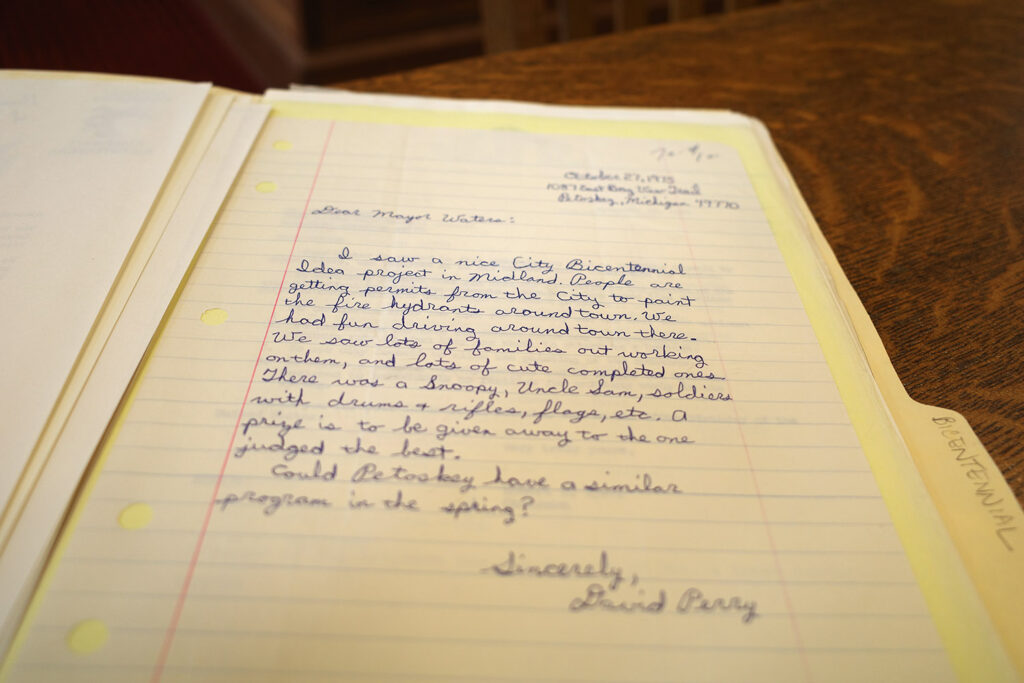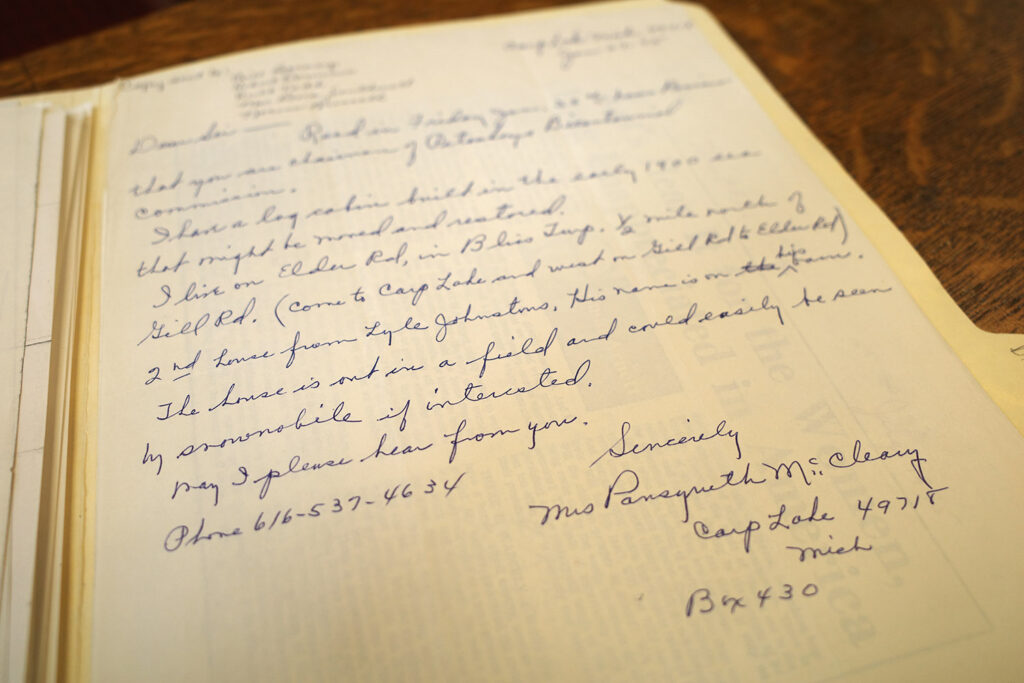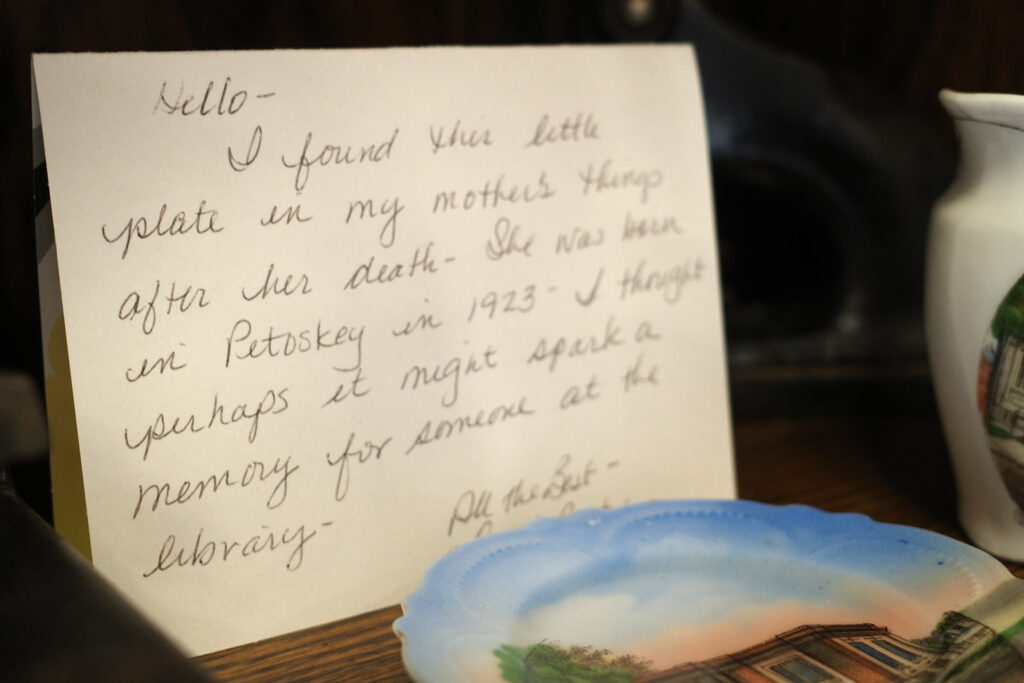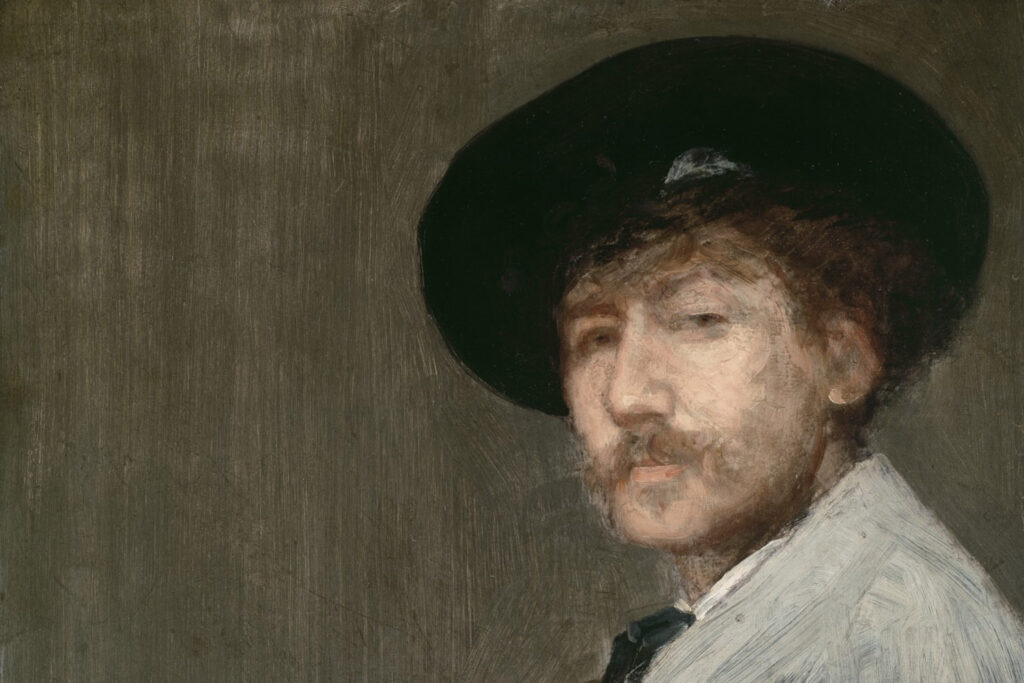The National Archives in Washington, D.C., needs your help. They’re hard up—desperate for volunteers.
Back rooms are piling high with historical documents awaiting digitization. Only, they’re just sitting there, gathering dust. Almost no one can read them.
They’re in cursive.

I first learned cursive could actually be a hurdle to legibility in 2020 when reading about some West Bloomfield 12th graders who were digitizing the letters of an early Ernest Hemingway acquaintance: Petoskey native Marjorie Bump. The article described the project, noting offhandedly that: “One challenge [a student] had to overcome was reading the cursive handwriting Bump used in some of the letters.”
I’d just wanted to read about Hemingway, but this sentence stopped me in my tracks.
Deciphering bad handwriting can certainly be challenging. But it can’t be possible younger generations can’t read cursive, I assured myself.

In a 2022 article in The Atlantic titled, “Gen Z Never Learned to Read Cursive,” former Harvard University president, Drew Gilpin Faust, chronicles her own realization of this fact.
She recounts teaching a history class in which a student was giving a report on a Civil War book. The book included some very interesting manuscripts, the student said. Only he couldn’t read them because they were in cursive.
Stunned, Faust quickly polled the rest of her class and found that two-thirds of her Harvard undergrads also couldn’t read cursive.
Upon closer inspection, this actually makes sense.
In 2010, just as Faust’s students and the West Bloomfield kids would have been starting elementary school, many states (including Michigan) dropped cursive from their Common Core standards.
The reasoning? Kids won’t need it. The world’s going digital. Typing proficiency will be far more important than knowing cursive.
Well, congratulations everyone, it worked. Anyone need a ton of historical documents for birdcage lining?

First, it’s quite possible to learn cursive and keyboarding simultaneously. Most kids type faster than Mavis Beacon before they even get to school anyway.
But the real kicker is it’s not just a style of penmanship we’re losing. As many studies have proven, information is processed differently when one is forced to write and take notes on paper. Typing is mostly just copying what you hear. Ears to fingertips.
But when the brain activity of students taking notes with pen and paper was monitored, scientists found “higher levels of electrical activity across a wide range of interconnected brain regions responsible for movement, vision, sensory processing, and memory.” Essentially, information percolates more slowly through your consciousness when you have to write it down. You must interpret, paraphrase, and reorganize what’s being communicated to you.
And why cursive over printing? Most notably, it’s faster and, once mastered, easier. Less lifting of the pen.
It’s also beautiful. To this, some might say who cares? I would respond: Yeah, who cares about how you dress. Who cares about a lovely, welcoming home. A well-cared for flower garden. Let’s ditch it all.
Of course, we should also want our children to learn cursive because it makes up the foundation of the Western world. All major historical documents were written in cursive: the Magna Carta, the Declaration of Independence, the Constitution, the Bill of Rights. Will future generations be simply unable to read these documents in their original form?

The whole thing leaves you a little sentimental.
My husband and I homeschool our kids and plan to teach them cursive. But if we didn’t, I’d wonder what would become of all our notes and letters someday. The birthday cards from grandma and grandpa. Baby-book milestones. Journal entries and random marginalia. The descriptions on the backs of photographs. Would they have to hire a translator to decipher them after we’re gone? Or would they just be left in a box, always wondering what they said?
Cursive has become its own rebellious form of communication in a way. It’s not meant for a computer’s eyes or the furthering of AI’s education.
Two years ago, a Michigan bill was introduced that “strongly encouraged” public schools to adopt a cursive curriculum. The bill passed, but cursive is still not an actual requirement. Only time will tell whether Michigan schools and other institutions will adopt this suggestion—or if, much like Sanskrit and Latin, cursive will fade into history, understood only by a dwindling few.
Faye Root is a writer and a homeschooling mother based in Northern Michigan. Follow her on X @littlebayschool.



